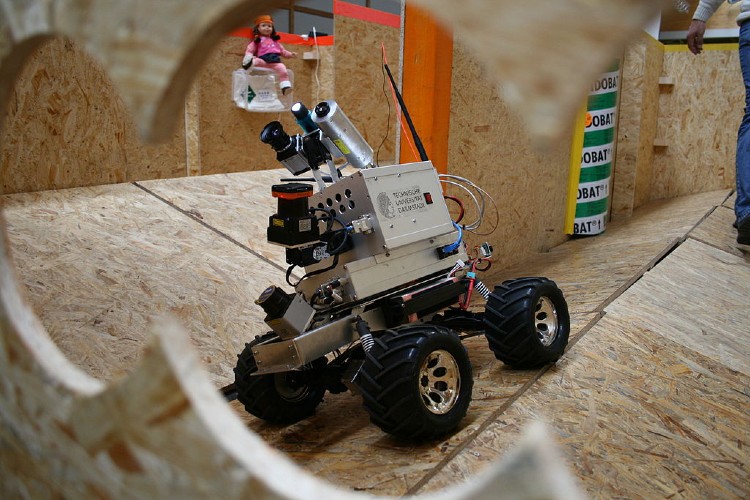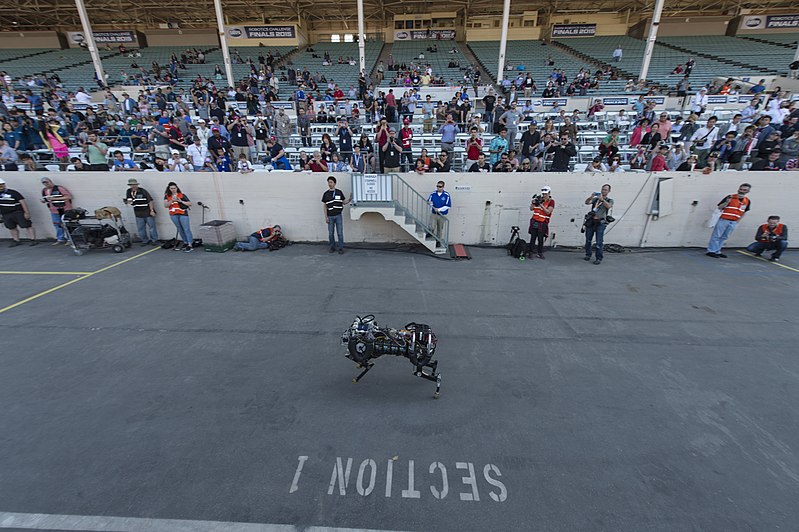Robotics to the Rescue: How Machines Help People in Need

When things go wrong, we often rely on first responders and other emergency workers to save lives and fix the problems endangering us. They receive training to fight fires, protect against dangerous people, rescue survivors and generally help make our lives safer. They risk their own lives, and while they're often willing to do so, their line of work is dangerous. As robotics technology has advanced in recent years, it has started appearing in numerous industries, including search and rescue and first response. How are machines helping people in need around the world, and what kind of robots are businesses using? How will the integration of robots change rescue efforts as we currently know them?
Benefits of Rescue Robots
What tasks can robots do that emergency rescue workers can't already manage? A lot of things, as it turns out. Robots can navigate areas where there might be survivors that are otherwise unsafe for human rescue workers to enter. They can fit in places humans can't, weaving their way through debris and collapsed buildings. These droids can see where survivors might be and whether it's safe for emergency crews to reach them. They can work 24 hours a day without a break, and they're not susceptible to the risks that sideline human workers.
These machines don't breathe, so they're not at risk for smoke inhalation or drowning, for example. Rescue robots can also help emergency crews by carrying out repetitive or dangerous tasks autonomously. Their presence frees up human workers for more important tasks. These are just a few of the benefits of utilizing robots in rescue scenarios. How is this technology already being employed?
Water Rescue
Rescues on and around water create additional complications for emergency crews. There's the threat of drowning, for one. In colder climates, hypothermia requires extra equipment to keep rescuers safe. However, new tech means you could toss a rescue robot, like Hyrodnalix's EMILY (Emergency Integrated Lifesaving Lanyard), into the water. This remote-controlled robot acts as a combination of a lifeboat and rescue buoy. It debuted back in 2010, but it hit the news in 2016 when it rescued asylum seekers on the Greek coastline.
During its first 10 days in the water, EMILY saved 240 refugees from drowning. EMILY is battery powered and can move up to 22 miles per hour while carrying up to five people. It doesn't need a crew to operate and can withstand nearly anything the ocean can throw at it. Its sturdiness is thanks to a Kevlar-reinforced hull. While it doesn't work autonomously, EMILY can save lives by reaching those in need as quickly as possible.

Wildfire Management
Thanks to climate change and the increasing temperatures across the globe, wildfires are burning around the world. These blazes are causing billions of dollars in property damage and are destroying both human and animal life. Fire crews work around the clock to suppress these blazes, but they aren't always successful. Sometimes this work costs them their lives. Robots can help with nearly every aspect of wildfire management and firefighting.
They can drop water or other fire-suppressant chemicals on the flames and assess where fires might spread using GPS and aerial topography. The best way to keep a wildfire from burning out of control is to prevent it from starting in the first place. But when this isn't an option, robots and drones make the job a little easier. These devices don't need to rest and are resistant to smoke damage. They can operate without the heavy oxygen tanks human fire crews need to breathe in smoky areas.
Nuclear Cleanup
Nuclear energy is supposed to be clean and safe — unless something goes wrong, like what happened in Fukushima, Japan, in 2011. Cleaning up after that nuclear meltdown will take decades, but high radiation levels make it impossible for human workers to enter safely. The Fukushima cleanup project has been a testing ground for robotics companies looking to make a name for themselves. Scientists designed Sunfish, for example, to spend three days mapping the debris within the reactor.
It autonomously sought the missing fuel that burned through the floor of the containment vessel after the tsunami struck the facility. At the end of the three days, Sunfish was able to find the missing substance. Containment is still another issue, but the biggest challenge was figuring out where the molten fuel had flowed.
Robotic First Responders
If you hear the phrase "first responders," the images that come to mind usually include firefighters and police officers — and EMTs as well. In the future, that mental image might involve robots. The MIT Department of Mechanical Engineering's Biomimetic Robotics Lab has developed a robot named Cheetah III. Scientists designed it to act as a first responder in hazardous environments. Cheetah III is the third incarnation of this first responder robot. The first version only existed as a proof of concept.

The bot's speed and agility increased with Cheetah II, but it wasn't suited for other tasks. Cheetah III can navigate hazardous areas autonomously, making its way over or around obstacles. All the while, it inspects the area to see if it's safe for humans to approach. Despite its abilities, this droid might never replace firefighters or police officers. However, it could be the first line of defense when there's an emergency too dangerous for humans to immediately enter.
Just The Beginning
We're only seeing the beginning of robotic rescue workers and first responders. As technology advances, these droids will save lives and change the way we think about search and rescue. Putting machines alongside people increases their chances of pulling off a successful rescue and preserving more lives. This factor is likely to be true no matter what the situation is — saving humans or animals. The next time you call 911 for an emergency, you may have a robot appear at your door before any first responders arrive. And if it does, it'll be ready to apply basic first aid and assess the situation for everyone's safety.
Thanks for helping to keep our community civil!
This post is an advertisement, or vandalism. It is not useful or relevant to the current topic.
You flagged this as spam. Undo flag.Flag Post


